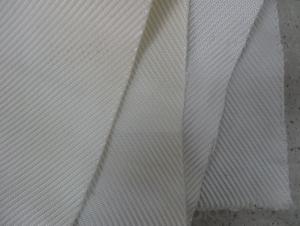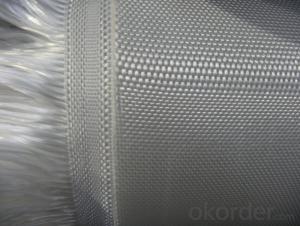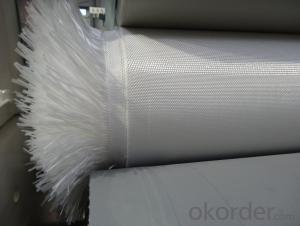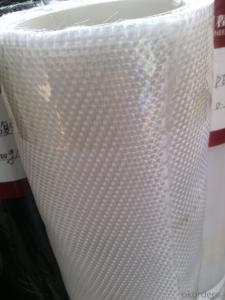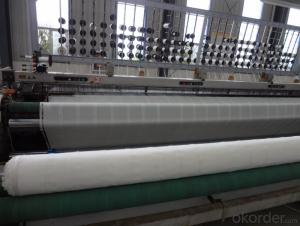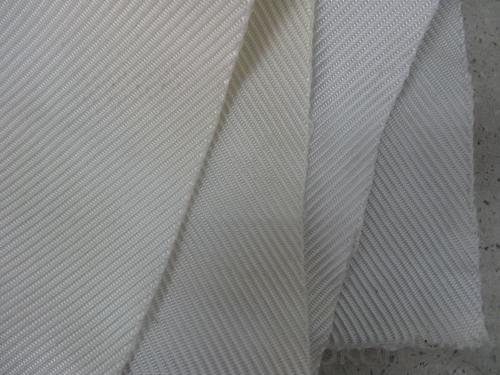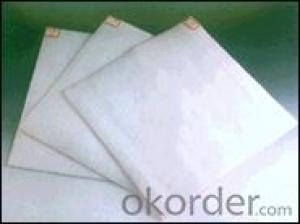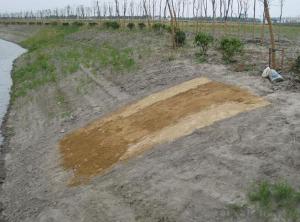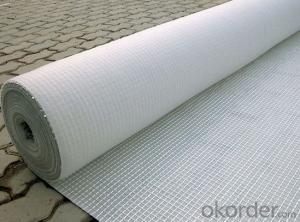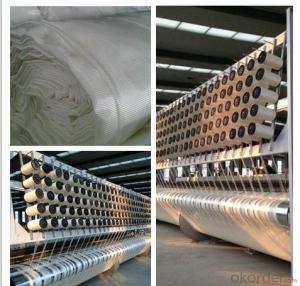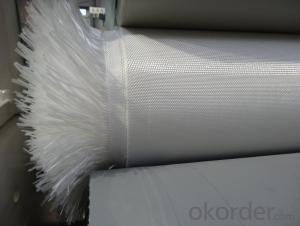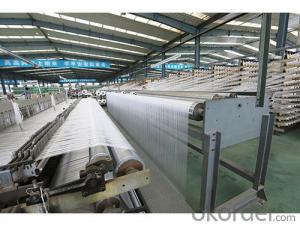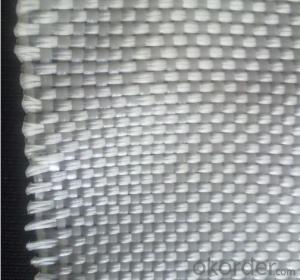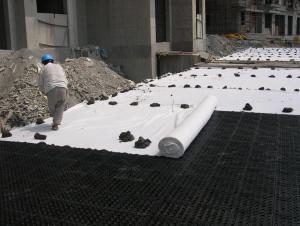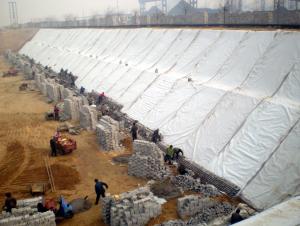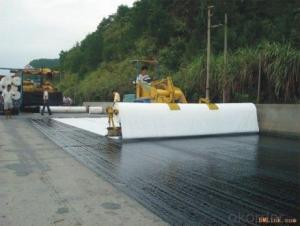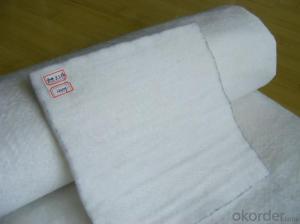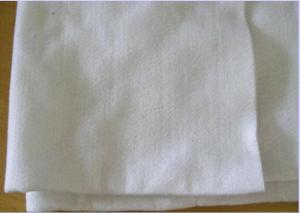Woven Geotextile Continuous Filament Made of PP or PET
- Loading Port:
- China main port
- Payment Terms:
- TT OR LC
- Min Order Qty:
- 3500 m²
- Supply Capability:
- 300000 m²/month
OKorder Service Pledge
OKorder Financial Service
You Might Also Like
Specification
Woven Geotextile
Woven Geotextile Introduction
Woven Geotextile is made of high tenacity and high molecular weight polypropylene yarns. Wear-resisting, bursting resistant and high tensile strength, also provide different strength at low elongation.
Woven Geotextile Application
Woven geotextile can be applied in soil stabilization, embankment, reinforced wall and slope, sidewalk paver, coastal and riverbank revetments, landfill separators and capping, etc.
Woven Geotextile Advantage
-High tensile strength
-Wear resistant
-Burst resistant
-Easy carry and easy application
PP Woven Geotextile Specifications
| No. | Physical Properties | Index | ||||||||||
| Material | Polypropylene/ PP | |||||||||||
| Unit Weight, g/m2 | 140 | 200 | 260 | 320 | 390 | 460 | 530 | 600 | 680 | 760 | 950 | |
| 1 | Tensile Strength at break(MD), kN/m, ≥ | 35 | 50 | 65 | 80 | 100 | 120 | 140 | 160 | 180 | 200 | 250 |
| 2 | Tensile Strength at break(CD), kN/m, ≥ | 24.5 | 35 | 45.5 | 56 | 70 | 84 | 98 | 112 | 126 | 140 | 175 |
| 3 | Elongation Rate(MD), %, ≤ | 35 | 35 | 35 | 35 | 35 | 35 | 35 | 35 | 35 | 35 | 35 |
| 4 | Elongation Rate(CD), %, ≤ | 30 | 30 | 30 | 30 | 30 | 30 | 30 | 30 | 30 | 30 | 30 |
| 5 | CBR Puncture Strength, Kn, ≥ | 2.0 | 4.0 | 6.0 | 8.0 | 10.5 | 13.0 | 15.5 | 18.0 | 20.5 | 23.0 | 28.0 |
| 6 | Tear Strength, kN, ≥ | 0.5 | 0.8 | 1.1 | 1.3 | 1.5 | 1.7 | 1.9 | 2.1 | 2.3 | 2.5 | 3.0 |
| 7 | Sewing Strength, kN/m, ≥ | Tensile Strength at break x 50 % | ||||||||||
| 8 | Vertical Permeability Coefficient, cm/s | k x (10-2~10-5), k=1.0~9.9 | ||||||||||
| 9 | Sieve Size O90(O95), mm | 0.07~0.5 | ||||||||||
| 10 | Tolerances on thickness, % | ±8 | ||||||||||
| 11 | Tolerances on width and length, % | ±2 | ||||||||||
PET woven geotextile specifications
Tensile strength(kN/m) | 100/50 | 200/50 | 400/50 | 600/50 | 800/50 | 1000/50 | 60/60 | 100/100 | 120/120 | 200/200 | 220/220 |
MD Values | 100 | 200 | 400 | 600 | 800 | 1000 | 60 | 100 | 120 | 200 | 220 |
CMD Values | 50 | 50 | 50 | 50 | 50 | 50 | 60 | 100 | 120 | 200 | 220 |
Woven Geotextile photos
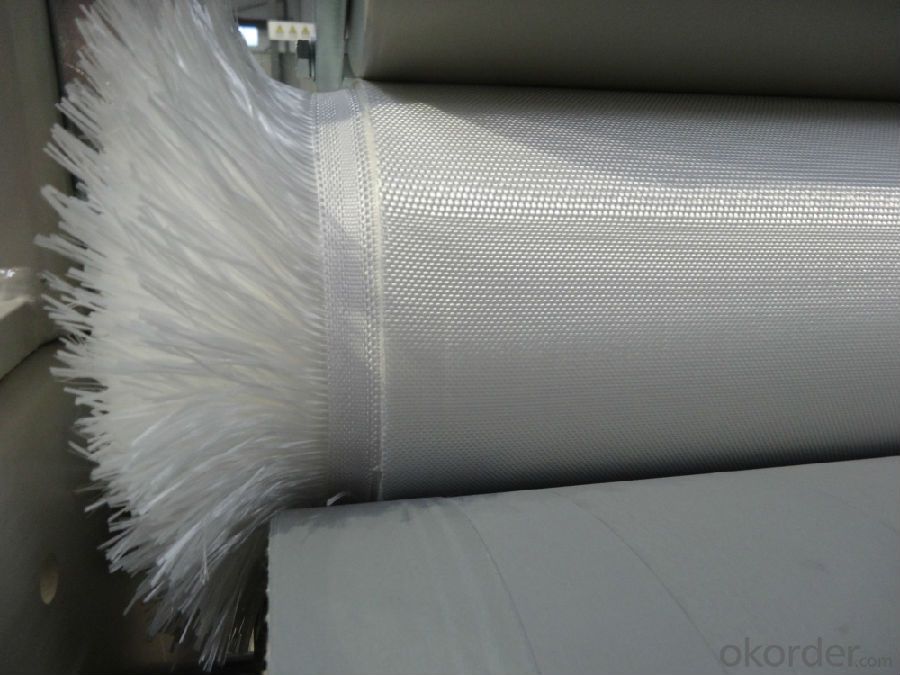
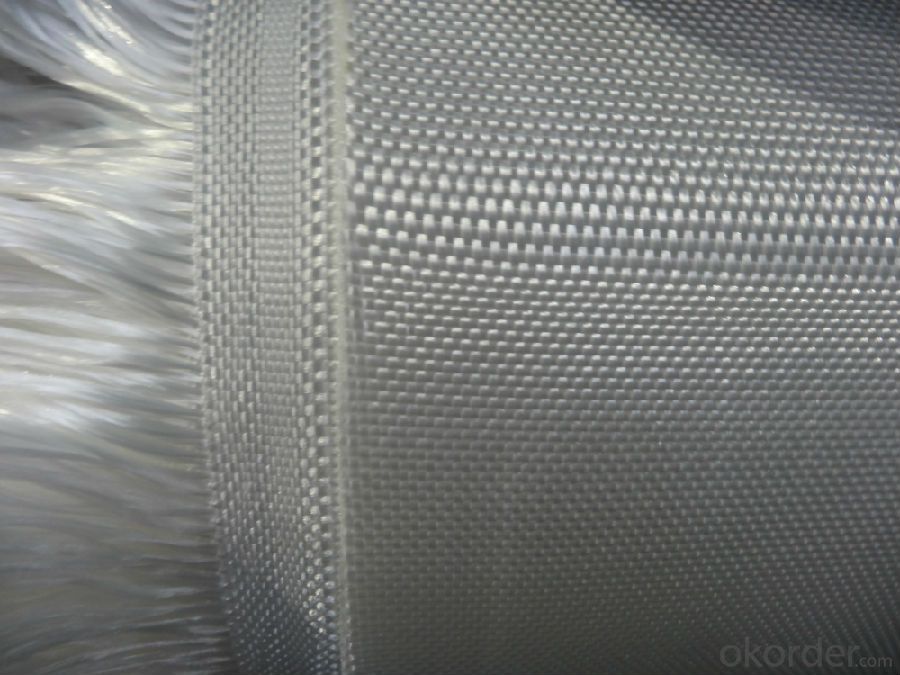

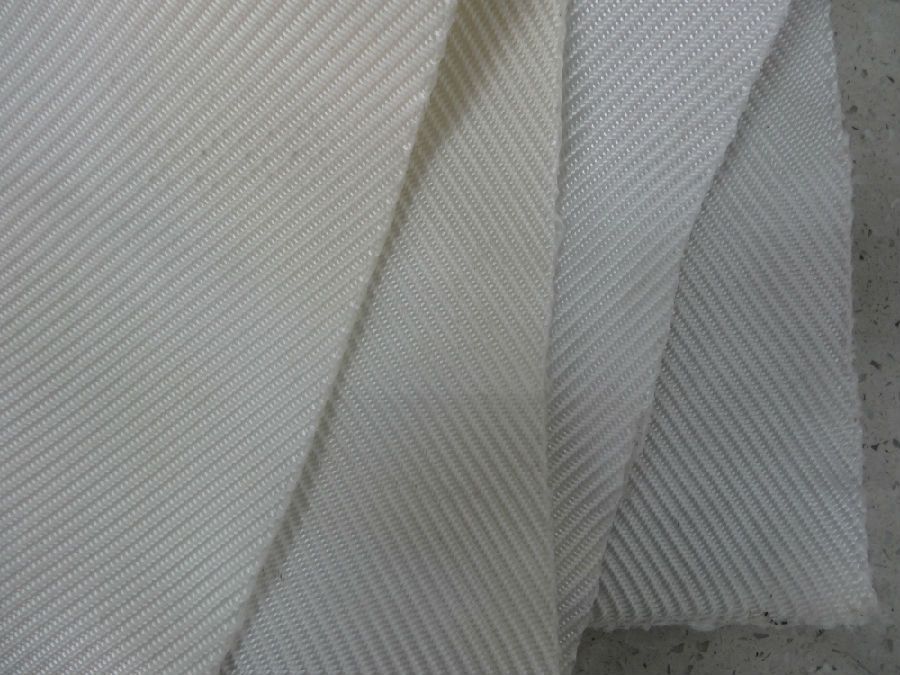
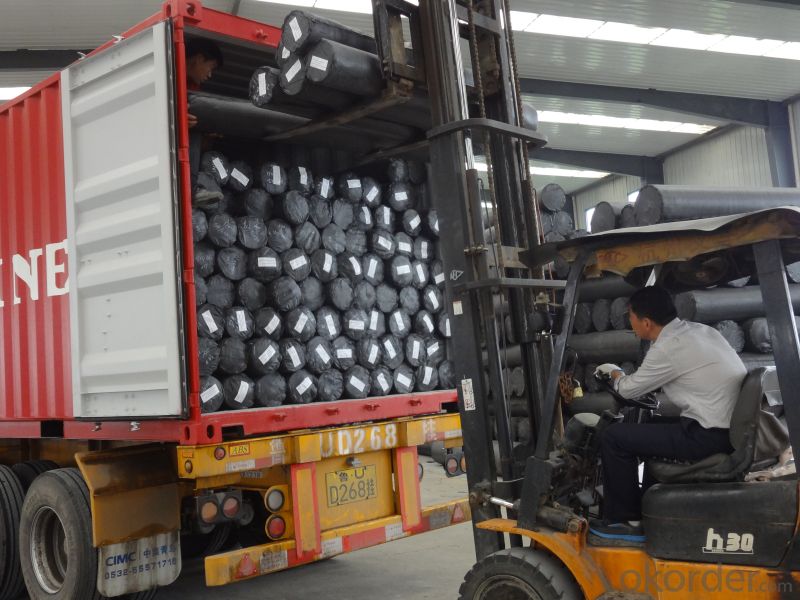
FAQ
1. Which payment do you accept?
For you convenience, our payment can be L/C, TT
2. Is free sample available?
We can supply free samples. You'll just need to pay for express cost.
3. How about your quality?
We have strict quality control system, we make testing on incoming raw material and finished products. Your third party testing is also welcomed. With high quality, our products are used on government projects at home and abroad. Our product quality is accepted by clients from all over the world. Warmly welcome your samples requirement or trail order.
- Q: How do geotextiles contribute to the durability of civil engineering structures?
- Geotextiles contribute to the durability of civil engineering structures by providing reinforcement, filtration, and separation. They act as a strong and stable barrier against soil erosion, preventing the movement and loss of soil particles. This reinforcement helps to maintain the integrity of the structure, especially in areas prone to high water flow or soil instability. Additionally, geotextiles act as a filtration layer, allowing water to pass through while preventing the migration of fine particles that could clog drainage systems. This filtration helps to maintain the functionality of the structure and prevent damage caused by water buildup. Furthermore, geotextiles aid in the separation of different layers of soil or materials, preventing mixing and maintaining the structural stability of the construction. Overall, geotextiles play a vital role in enhancing the durability and longevity of civil engineering structures.
- Q: Are geotextiles suitable for use in stormwater management systems?
- Yes, geotextiles are suitable for use in stormwater management systems. They are commonly used in a variety of applications within these systems, such as erosion control, filtration, and drainage. Geotextiles can effectively filter sediment and pollutants, prevent soil erosion, and provide stability to stormwater infrastructure.
- Q: Does the color cloth be geotextile?
- Straw, sacks, stone, gravel, wood, steel, color cloth, lighting equipment, transport, alarm equipment, digging tools, lead wire, cement, soil, sand, geotextile and so on.
- Q: Are geotextiles suitable for use in rain garden systems?
- Yes, geotextiles are suitable for use in rain garden systems. Geotextiles can be used as a filter fabric to separate the soil and gravel layers in rain gardens, preventing clogging and promoting proper drainage. They help to retain water and nutrients while allowing excess water to flow through, making them an effective component in rain garden construction.
- Q: Can geotextiles be used in green wall systems?
- Yes, geotextiles can be used in green wall systems. Geotextiles are often used as a filtration and separation layer between the soil and the retaining structure in green walls. They help retain moisture, prevent soil erosion, and provide stability to the system.
- Q: Geotextile grip test how to do? What is the step?
- Is said to be the strength test or the pull strength test. Can be based on relevant standards. For example: SL / T235-1999 standard, which has the relevant test method.
- Q: What are the considerations for geotextile selection in landfill projects?
- When selecting geotextiles for landfill projects, several considerations must be taken into account. These include the desired function of the geotextile, such as separation, filtration, or drainage. The physical properties of the geotextile, such as tensile strength, puncture resistance, and thickness, are also important factors to consider. Additionally, the site conditions, such as soil type, water table, and potential for chemical exposure, should be evaluated to ensure the geotextile's compatibility. Lastly, the long-term durability and cost-effectiveness of the geotextile should be considered to ensure its suitability for the landfill project.
- Q: How do geotextiles help with soil separation in railway ballast systems?
- Geotextiles help with soil separation in railway ballast systems by acting as a barrier between the ballast and underlying soil. They prevent the mixing of fine soil particles with the ballast, which can lead to settlement and track instability. The geotextiles allow for proper drainage and filtration of water, while ensuring the stability and longevity of the railway tracks.
- Q: How do geotextiles help with ground improvement?
- Geotextiles help with ground improvement by providing reinforcement, filtration, and separation functions. They enhance soil stability, prevent erosion, and improve drainage, ultimately enhancing the overall performance and durability of the ground.
Send your message to us
Woven Geotextile Continuous Filament Made of PP or PET
- Loading Port:
- China main port
- Payment Terms:
- TT OR LC
- Min Order Qty:
- 3500 m²
- Supply Capability:
- 300000 m²/month
OKorder Service Pledge
OKorder Financial Service
Similar products
Hot products
Hot Searches
Related keywords
